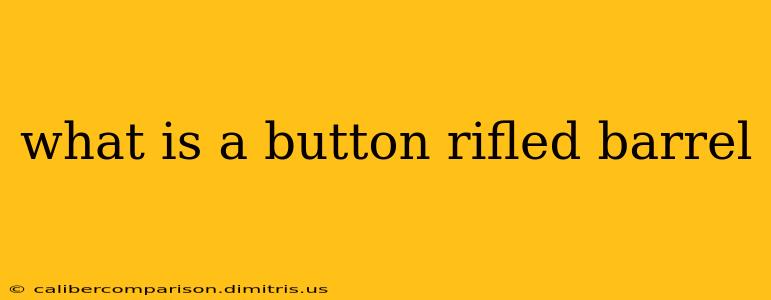A button rifled barrel represents a fascinating and historically significant method of creating the rifling—the spiral grooves—inside a firearm's barrel. Unlike modern techniques that use sophisticated machinery, button rifling relies on a hardened steel tool, the "button," to cut the grooves directly into the barrel's bore. This process results in barrels known for their accuracy and unique characteristics.
The Button Rifling Process: A Mechanical Marvel
The button rifling process is remarkably straightforward in concept, although the precision required is exceptionally high. A hardened steel button, precisely shaped to the desired rifling profile (including the number of grooves, their twist rate, and their dimensions), is drawn through the barrel's bore. As the button passes through, it cuts the grooves into the barrel's interior. This process is done while the barrel is still relatively soft.
Key Characteristics of Button Rifled Barrels:
-
Accuracy: Button rifling often produces exceptionally accurate barrels, often exceeding the accuracy of barrels rifled using other methods. The cold working of the metal during the button rifling process contributes to this accuracy.
-
Unique Groove Profile: The grooves produced by button rifling have a distinct profile, often exhibiting a slightly sharper edge compared to grooves cut by other methods. This unique profile contributes to the barrel's accuracy and can also affect the bullet's engagement with the rifling.
-
Strength and Durability: The cold-working nature of button rifling results in a stronger and more durable barrel. This is particularly important in high-pressure applications.
-
Production Efficiency: While the initial setup and button creation are complex, the actual rifling process itself is relatively fast and efficient, making it suitable for high-volume production.
Button Rifling vs. Other Rifling Methods:
Several other rifling methods exist, each with its advantages and disadvantages:
-
Broaching: This method uses a long tool with multiple cutting teeth to create the rifling. It's highly precise but can be slower than button rifling.
-
Hammer Forging: This process creates the rifling as part of the barrel forging process, offering good strength and repeatability.
-
Electrochemical Etching: This modern technique uses electrical currents to etch the rifling into the barrel, allowing for complex rifling designs.
While button rifling might not always offer the most complex groove profiles achievable with modern techniques like electrochemical etching, its consistent accuracy and production efficiency have maintained its place in the firearms industry.
Historical Significance and Modern Applications:
Button rifling has a long and rich history in firearm manufacturing. While its prominence may have waned somewhat in favor of newer methods, it remains a valuable and respected technique. Many modern manufacturers still utilize button rifling for its superior accuracy and durable barrels, particularly in applications where precision is paramount.
In conclusion, button rifling remains a significant method in firearms manufacturing, offering a balance of accuracy, durability, and efficiency. Its unique characteristics and historical relevance continue to make it a topic of interest for gun enthusiasts and firearms professionals alike.

